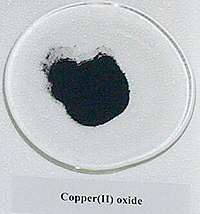
Photo from wikipedia
There is increasing demand for an efficient technique for separating automobile shredder residue (ASR) obtained from end-of-life vehicles (ELVs). A particular challenge is the physical separation of conductive materials from… Click to show full abstract
There is increasing demand for an efficient technique for separating automobile shredder residue (ASR) obtained from end-of-life vehicles (ELVs). A particular challenge is the physical separation of conductive materials from glass. In this study, the performance of pretreatment and induction electrostatic separation process was evaluated. The results show that a sieving/washing (combination of sieving and washing) pretreatment was the most effective for removing conductive material compared to electrostatic separation alone. The optimum separation efficiency of copper products was achieved with an applied voltage of 20 kV, a relative humidity of less than 35%, and a splitter position of 8 cm. Although the separation efficiency was slightly reduced when some small glass particles remained attached to the conductive materials, the separation efficiency of copper from the pretreated ASR dramatically increased to 83.1% grade and 90.4% recovery, compared to that of raw ASR (34.3% grade and 58.6% recovery). Based on these results, it was demonstrated that the proposed sieving/washing pretreatment was proficient at removing conductive materials from glass; thus, it has the potential to significantly improve the efficiency of electrostatic separation for ASR.
Journal Title: Metals
Year Published: 2018
Link to full text (if available)
Share on Social Media: Sign Up to like & get
recommendations!